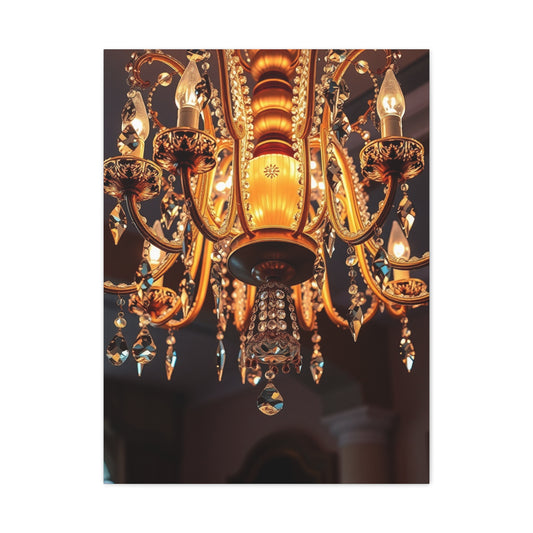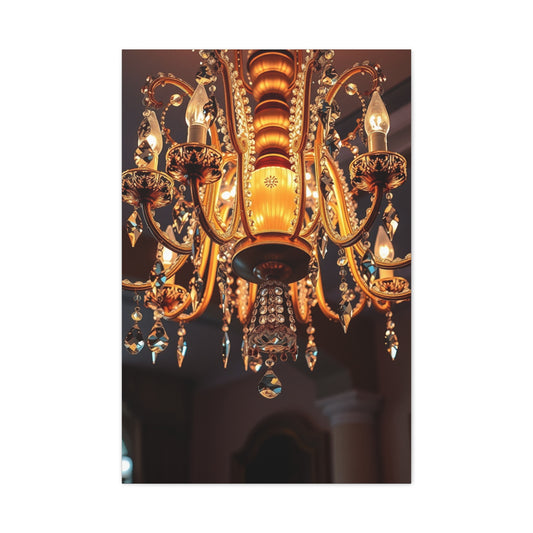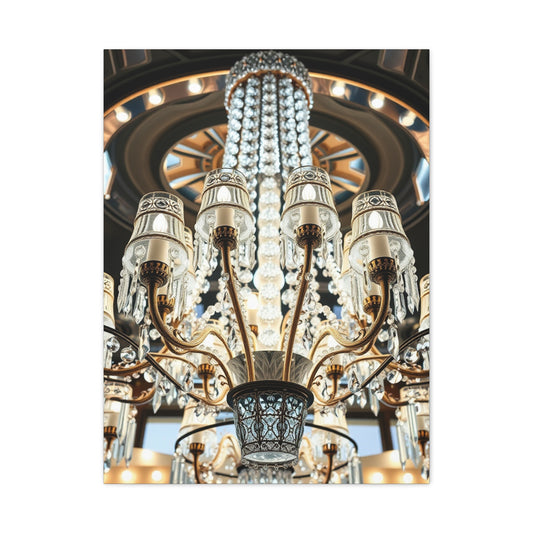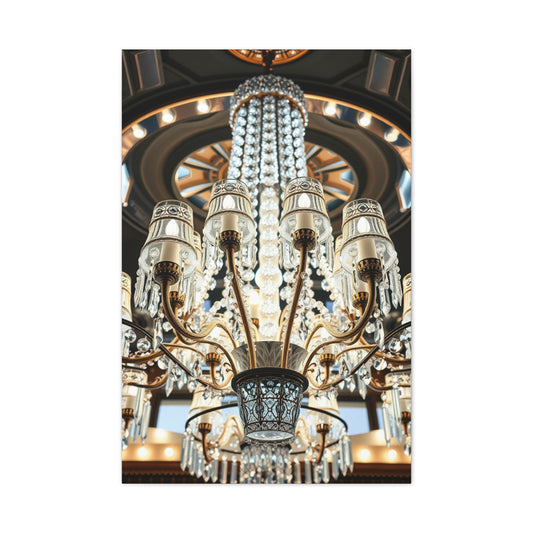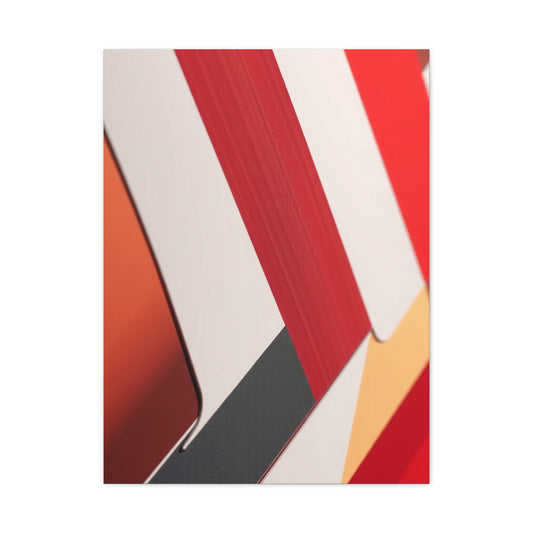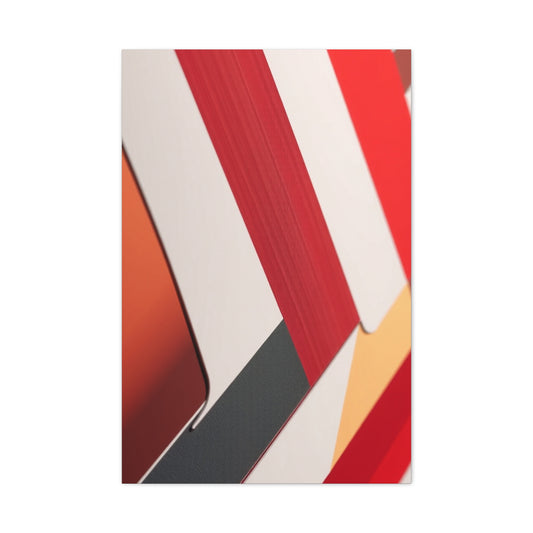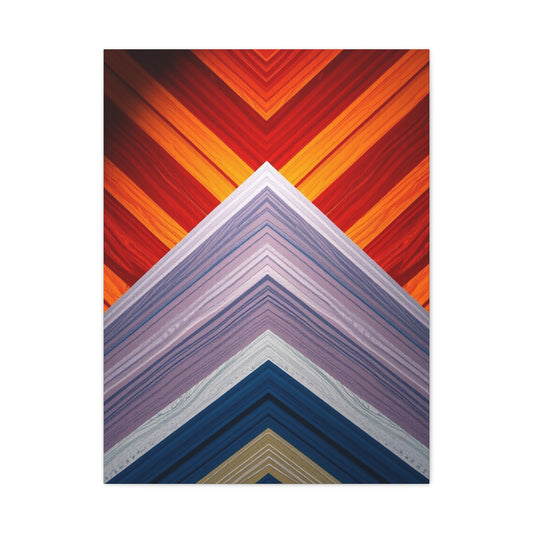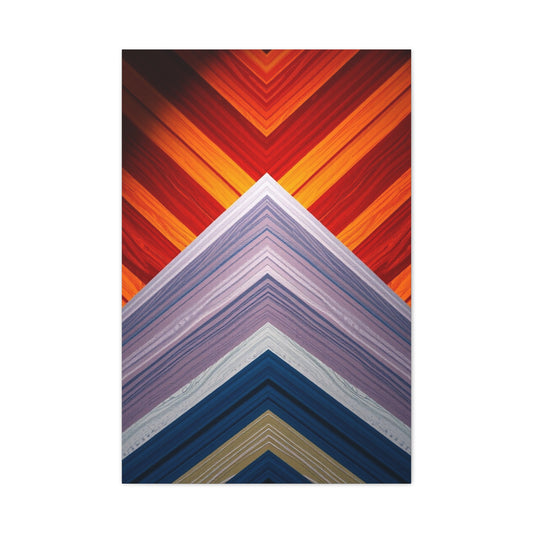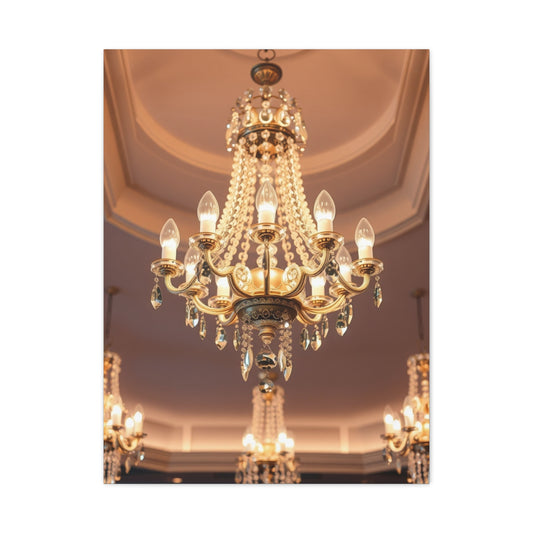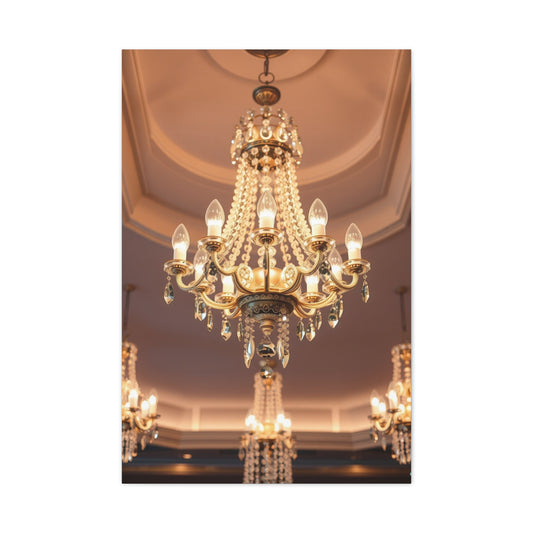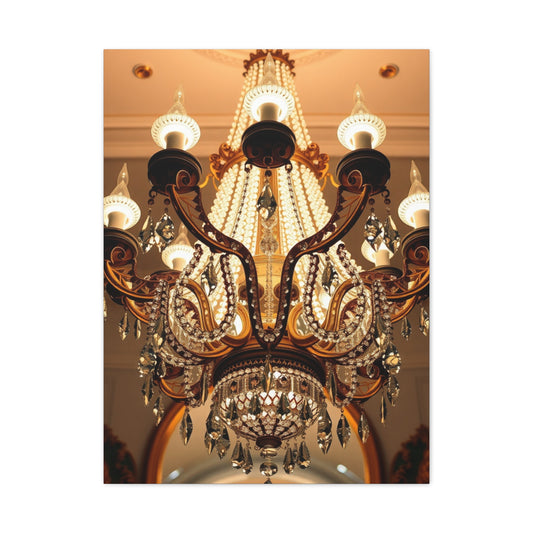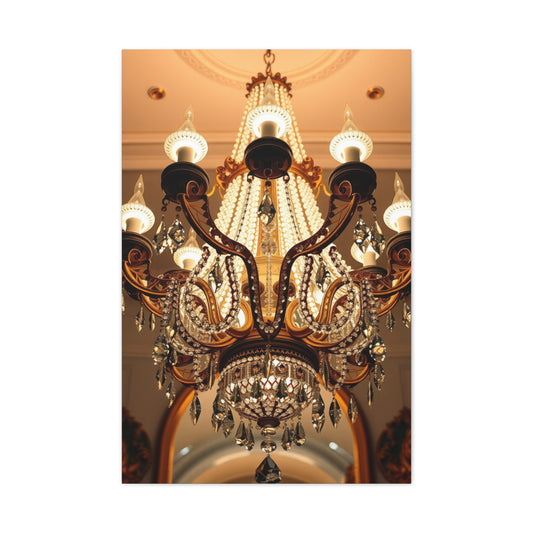Photography has evolved dramatically over the years, but 35mm film continues to hold a special place for many photographers. While digital cameras dominate today’s world, the classic aesthetics of film offer a distinct experience that digital sometimes cannot replicate. The tactile nature of film, the anticipation of waiting for it to be developed, and the unique textures captured make 35mm film photography a rewarding pursuit for beginners and seasoned photographers alike.
Understanding the fundamentals of 35mm film is crucial for anyone starting in film photography. This guide will explore its history, the types of film available, essential camera choices, the shooting experience, and the developing process. By familiarizing yourself with these concepts, you can begin creating images that combine artistic vision with the timeless quality of analog photography.
What is 35mm Film
35mm film is a photographic film that measures approximately 35mm in width, a standard that has remained consistent since its introduction. Initially developed in the late 19th century, it became a popular choice for motion pictures before transitioning to still photography in the 1930s. The film consists of a transparent plastic base coated with a light-sensitive emulsion that captures images when exposed to light.
When a photograph is taken, light passes through the camera lens and reacts with the chemicals in the emulsion. This reaction forms a latent image that becomes visible after development. Typically, a roll of 35mm film contains 24 or 36 exposures, providing photographers with a limited number of frames and encouraging thoughtful composition with each shot.
Even in the digital age, many photographers appreciate the distinct characteristics of film. Grain patterns, color rendition, and the subtle nuances of light capture create a look that is difficult to reproduce digitally. Additionally, the process of shooting on film fosters a more deliberate and mindful approach to photography.
How 35mm Film Works
The construction of 35mm film allows it to pass through cameras smoothly due to perforations on both edges. These small holes help advance the film inside the camera, ensuring proper frame alignment. Although the film is called 35mm, the actual width is slightly larger, generally around 36mm, to accommodate the perforations.
Photographers using film must consider how the emulsion reacts to light. Lighter areas in the scene create more significant chemical changes on the film, while darker areas produce less reaction. This characteristic contributes to the dynamic range and tonal depth that film can capture. Understanding these principles is essential for achieving the desired exposure and artistic effect.
Film photography requires patience and planning. Unlike digital photography, where immediate feedback is available, film demands that photographers anticipate results. This process encourages careful attention to lighting, composition, and camera settings, creating a more engaged and thoughtful photographic practice.
The History of 35mm Film
The origins of 35mm film trace back to the late 1800s. Early inventors experimented with various film sizes for motion picture cameras, eventually standardizing on the 35mm width for convenience and versatility. By the 1930s, photographers began using 35mm film for still photography, taking advantage of its portability and affordability.
Over the decades, advancements in film chemistry improved image quality and expanded creative possibilities. Color film emerged, black and white remained popular for artistic expression, and slide films offered high-contrast, saturated results. The format became a staple for amateur photographers, photojournalists, and professionals, cementing its reputation as a reliable and versatile medium.
Even as digital photography grew in popularity, the charm of 35mm film persisted. Photographers were drawn to its tangible qualities, distinctive aesthetics, and the engaging process of shooting and developing film. Today, 35mm film photography continues to inspire creativity and a deeper connection to the craft of image-making.
Understanding Film Exposure
Exposing film correctly is critical to achieving the desired results. Film exposure depends on three main factors: aperture, shutter speed, and film sensitivity, commonly referred to as ISO. Each factor interacts with the others to determine how much light reaches the film and how the final image will appear.
Aperture controls the amount of light entering the camera through the lens. Wider apertures allow more light, creating a shallow depth of field, while smaller apertures reduce light and increase depth of field. Shutter speed determines how long the film is exposed to light. Fast shutter speeds freeze motion, while slower speeds capture movement and can create a sense of motion blur.
Film sensitivity, or ISO, affects how the film reacts to light. Low ISO films require more light but offer finer grain and higher detail, while high ISO films are more sensitive to light but produce more noticeable grain. Understanding these variables and how they interact allows photographers to control exposure creatively, achieving the desired look for each image.
Why Choose 35mm Film
Shooting on 35mm film offers unique benefits that differ from digital photography. Film encourages intentionality, requiring photographers to consider each shot carefully. The process of loading film, advancing frames, and waiting for development cultivates patience and discipline.
The visual qualities of film are also distinctive. Grain, color rendition, and tonal subtleties contribute to an image that feels organic and timeless. Many photographers appreciate these aesthetic qualities, which can evoke emotion and nostalgia in ways that digital images sometimes cannot replicate.
Additionally, working with film can deepen understanding of photographic principles. Since immediate feedback is unavailable, photographers must rely on knowledge of exposure, lighting, and composition, ultimately improving technical skills and creative intuition.
Types of 35mm Film
Understanding the types of 35mm film is essential for choosing the right medium for your photography. Each type has distinct characteristics, influencing color rendition, contrast, and the overall aesthetic of the image. Selecting the correct film allows photographers to achieve the desired effect and experiment creatively with different styles.
Colour negative film is the most widely used type of 35mm film. It produces images with a full range of colors and soft tonal transitions. This film is ideal for everyday photography, including portraits, landscapes, and casual snapshots. Colour negative film is forgiving with exposure, making it a suitable choice for beginners who are still learning the nuances of light and exposure.
Black and white film has remained a classic choice for artists and documentary photographers. Unlike color film, it emphasizes contrast, textures, and composition without the distraction of color. Black and white film is particularly effective for creating dramatic images, highlighting shadows, and conveying mood. Its timeless aesthetic often appeals to photographers seeking a more expressive or nostalgic style.
Slide film, also known as reversal or transparency film, produces positive images that can be projected or scanned for prints. Slide film is prized for its vibrant colors, high contrast, and sharp detail. It is commonly used for landscapes, travel photography, and fine art projects. Unlike negative film, slide film requires precise exposure, as overexposure or underexposure cannot easily be corrected during development.
Other specialty films, such as infrared or expired films, offer unique creative possibilities. Infrared film captures light outside the visible spectrum, producing ethereal and surreal imagery. Expired film can yield unpredictable colors and textures, adding a distinctive character to photographs. Experimenting with different types of film can help photographers discover personal preferences and expand their creative toolkit.
Understanding Film Speed
Film speed, measured in ISO, determines the sensitivity of the film to light. The ISO number indicates how quickly the film reacts to light exposure. Lower ISO films, such as ISO 100, are less sensitive and require more light for proper exposure. They produce fine grain and high detail, making them ideal for outdoor photography in bright conditions.
Higher ISO films, such as ISO 800, are more sensitive to light and can be used in low-light situations or to capture fast-moving subjects. The trade-off is increased grain and slightly reduced detail. Choosing the appropriate film speed depends on the lighting conditions, subject matter, and desired aesthetic. Understanding ISO is crucial for achieving balanced exposure and creating the intended mood in images.
Medium-speed films, such as ISO 200 or 400, offer a balance between light sensitivity and image quality. They are versatile and suitable for a variety of conditions, from indoor photography with natural light to outdoor scenes with mixed lighting. Beginners often start with medium-speed films as they provide flexibility while maintaining acceptable image quality.
Film speed also interacts with aperture and shutter speed, forming the exposure triangle. A solid understanding of how these three factors work together allows photographers to make informed choices when setting up a shot. Mastery of film speed helps achieve consistency and predictability in results, a key factor when transitioning from digital to film photography.
Choosing a Film Camera
Selecting the right camera is a critical step for anyone starting with 35mm film photography. Cameras range from simple point-and-shoot models to professional SLRs, each offering varying levels of control, portability, and complexity. The choice depends on your goals, budget, and preferred style of photography.
Manual cameras provide full control over aperture, shutter speed, and focus. They allow photographers to experiment with creative techniques, such as long exposures, selective focus, and depth-of-field effects. Manual cameras are excellent for learning fundamental photography skills and understanding how light interacts with film.
Automatic cameras simplify the process, adjusting exposure and focus automatically. These cameras are convenient for beginners or casual shooters who want to focus on composition without worrying about technical settings. While automatic cameras may limit creative control, they provide reliable results in a variety of lighting conditions.
SLR cameras, particularly those with interchangeable lenses, offer versatility and professional-level control. Interchangeable lenses allow photographers to select the most suitable focal length and optical characteristics for each scene. Prime lenses, for example, provide sharpness and wide apertures for low-light photography, while zoom lenses offer flexibility for varying compositions.
Brand choice also plays a role in selecting a camera. Popular brands like Canon, Nikon, Pentax, and Minolta have a long history of producing durable and reliable 35mm cameras. Each brand offers a range of models with specific features, so research and hands-on experience can help determine the best fit. Vintage cameras can also be excellent options, providing unique characteristics and a classic shooting experience.
Film Loading and Camera Operation
Once you have chosen a camera, learning to load film correctly is essential. Film rolls must be handled with care to avoid exposure to light, which can ruin the images. Typically, the film is placed in the camera’s film chamber, threaded through the take-up spool, and advanced to the first frame. Properly loading the film ensures smooth operation and accurate frame spacing.
Understanding the camera’s controls is equally important. Adjusting aperture, shutter speed, and focus requires familiarity with the camera’s mechanisms. Practicing these adjustments allows photographers to react quickly to changing light conditions and to experiment creatively with different settings. Regular use builds confidence and muscle memory, improving overall shooting efficiency.
Film cameras also require regular maintenance. Cleaning the lens, viewfinder, and film chamber ensures optimal performance. Mechanical cameras benefit from periodic servicing to prevent shutter or advance mechanism issues. A well-maintained camera not only performs reliably but also contributes to the longevity of the equipment and the quality of the images produced.
Metering and Exposure Techniques
Proper exposure is crucial in film photography because, unlike digital cameras, film does not offer immediate feedback. Photographers rely on light meters, either built into the camera or as separate devices, to measure light levels and determine appropriate settings. Light meters help balance aperture, shutter speed, and film sensitivity for accurate exposure.
In the absence of a meter, photographers can use the sunny 16 rule as a guideline. This rule suggests that on a sunny day, setting the aperture to f/16 and the shutter speed to the reciprocal of the film ISO provides a reasonably accurate exposure. Understanding basic metering principles allows photographers to adapt to a variety of lighting situations and achieve consistent results.
Exposure also involves creative decisions. Overexposing or underexposing film can produce different artistic effects. Slight overexposure on color negative film can result in warmer tones, while slight underexposure may enhance contrast and depth. Experimentation with exposure encourages personal style and helps photographers learn how film reacts to light in diverse scenarios.
Composition and Framing
Composition is a fundamental aspect of photography, and film encourages thoughtful framing due to the limited number of exposures on each roll. Unlike digital photography, where hundreds of images can be captured and deleted, film requires photographers to plan and visualize each shot carefully.
Key compositional elements include leading lines, balance, symmetry, and the rule of thirds. Leading lines guide the viewer’s eye through the image, creating depth and interest. Balancing elements within the frame ensures a harmonious visual flow. Symmetry can create striking, orderly compositions, while asymmetry adds tension and intrigue.
Framing also involves considering the subject’s placement relative to background and foreground elements. The interplay of light and shadow, texture, and perspective all contribute to the overall impact of the photograph. Developing a strong sense of composition enhances both the aesthetic quality and narrative strength of your images.
Film photography encourages mindfulness during shooting. Photographers often pause to evaluate lighting, angles, and subject interactions before pressing the shutter. This deliberate approach fosters a deeper connection to the process and often results in more thoughtful and compelling images.
Understanding Grain and Image Texture
Grain is a characteristic element of film photography that contributes to its distinctive aesthetic. Unlike digital noise, which often appears random and intrusive, film grain can enhance texture and mood. The amount and appearance of grain depend on the film type and ISO.
Lower ISO films produce finer grain, resulting in smooth, detailed images ideal for portraits and landscape photography. Higher ISO films have more pronounced grain, which can add a vintage or gritty quality to images. Grain also interacts with light and shadow, affecting the perceived sharpness and tonal depth.
Appreciating the role of grain helps photographers make informed choices about film type and exposure. Grain is not merely a technical limitation but an artistic tool that can influence mood and visual storytelling. By experimenting with different film stocks, photographers can explore a range of textures and achieve the desired emotional effect in their work.
Lighting Considerations for Film
Lighting plays a pivotal role in 35mm film photography. Unlike digital cameras, which allow post-processing adjustments to exposure and color balance, film requires careful attention to lighting conditions during shooting. Understanding how natural and artificial light interacts with film helps achieve desired results and avoids unwanted effects.
Natural light offers a wide range of possibilities, from the warm, soft glow of early morning and late afternoon to the harsh, direct light of midday. Each lighting condition affects color, contrast, and shadow. Photographers must consider the direction, quality, and intensity of light when framing their shots.
Artificial lighting, such as studio lights or flashes, provides control over illumination and shadows. Properly diffused light can create soft, flattering images, while hard light adds drama and contrast. Film’s sensitivity to different types of light also influences color rendition and tonal range, making lighting a critical factor in the shooting process.
Shooting Techniques for 35mm Film
Shooting on 35mm film requires a thoughtful and deliberate approach. Unlike digital photography, where hundreds of frames can be taken without much consideration, film encourages photographers to slow down and carefully plan each shot. Mastering basic shooting techniques helps ensure proper exposure, sharp focus, and visually compelling compositions.
Understanding aperture, shutter speed, and ISO is fundamental for shooting on film. Aperture controls the amount of light entering the camera and affects depth of field. A wide aperture allows more light and creates a shallow depth of field, isolating the subject from the background. A narrow aperture reduces light but increases the range of focus, making it ideal for landscapes or group shots.
Shutter speed determines how long the film is exposed to light. Fast shutter speeds freeze motion, capturing sharp images of moving subjects, while slow shutter speeds can create motion blur, adding a sense of movement or artistic effect. Combining aperture and shutter speed thoughtfully allows photographers to achieve creative and technically sound results.
ISO, or film speed, influences sensitivity to light. Low ISO films require more light but produce finer grain, while high ISO films are suitable for low-light conditions but result in more noticeable grain. Understanding the interaction between ISO, aperture, and shutter speed is crucial for achieving balanced exposure and desired aesthetic effects.
Composition Techniques for Film Photography
Composition plays a significant role in creating compelling images. With film, every frame counts, so paying attention to framing and visual balance is essential. Techniques such as the rule of thirds, leading lines, framing, and symmetry help photographers structure their images effectively.
The rule of thirds involves dividing the frame into nine equal parts and positioning subjects along the intersecting lines. This creates a natural visual balance and draws attention to key elements. Leading lines guide the viewer’s eye through the image, adding depth and perspective. These lines can be roads, rivers, fences, or architectural features.
Framing involves using elements within the scene to create a border around the subject, focusing attention and adding context. Symmetry can create a sense of order and harmony, while deliberate asymmetry adds tension and visual interest. Paying attention to foreground, midground, and background elements ensures a well-rounded composition that engages the viewer.
Film photography encourages patience and mindfulness. Each shot is carefully considered, from choosing the angle to adjusting lighting and framing. This intentional approach often leads to more thoughtful and aesthetically pleasing images compared to the rapid-fire nature of digital photography.
Metering and Exposure Accuracy
Accurate exposure is critical in film photography because corrections after the shot are limited. Using a light meter, either built-in or handheld, helps determine the correct combination of aperture, shutter speed, and ISO for a well-exposed image. Understanding how to read a meter and apply its guidance is a foundational skill for film photographers.
The sunny 16 rule is a practical guideline for outdoor photography without a meter. On a bright sunny day, set the aperture to f/16 and the shutter speed to the reciprocal of the film’s ISO. For example, with ISO 200 film, use a shutter speed of 1/200 seconds. Adjustments can be made for different lighting conditions, but the rule provides a reliable starting point.
Experimenting with exposure also allows creative expression. Slight overexposure on color negative film can produce warmer tones, while underexposure can enhance contrast and mood. Learning how film responds to varying light intensities helps photographers develop a personal style and understand the technical limitations and possibilities of their chosen film stock.
Focusing Techniques
Achieving sharp focus is vital in 35mm film photography. Manual focus requires careful attention to distance, depth of field, and subject movement. Using the viewfinder and focusing ring, photographers adjust until the subject appears crisp and well-defined. Focusing on key subjects ensures that images convey the intended message and maintain visual clarity.
Zone focusing is a helpful technique, particularly for street and documentary photography. By estimating the distance to the subject and setting the lens accordingly, photographers can capture images quickly without precise adjustments for each shot. This technique, combined with a narrow aperture, increases the range of acceptable focus and allows for spontaneous shooting.
Depth of field also influences how focus is perceived in the image. Wide apertures produce shallow depth of field, isolating the subject and blurring the background. Narrow apertures increase depth of field, keeping more of the scene in focus. Understanding these principles helps photographers create visually striking images with intentional focus control.
Using Filters and Accessories
Filters and camera accessories enhance creative possibilities in 35mm film photography. Neutral density filters reduce the amount of light entering the lens, enabling longer exposures in bright conditions. Polarizing filters reduce glare, enhance colors, and improve contrast, particularly in outdoor photography.
Close-up lenses and extension tubes allow photographers to explore macro photography with film cameras. Tripods provide stability for long exposures or low-light situations, ensuring sharp images. Light meters, both handheld and built-in, are essential tools for accurate exposure measurement, particularly in challenging lighting conditions.
Choosing the right accessories depends on the type of photography pursued. Portrait photographers may benefit from soft-focus or color filters, while landscape photographers often rely on polarizers and tripods. Accessories expand creative possibilities and help photographers achieve technical precision in a variety of shooting conditions.
Developing 35mm Film
After capturing images, the next step is developing the film. Developing 35mm film involves a chemical process that transforms the exposed emulsion into a visible image. This process requires careful handling, precise timing, and knowledge of chemical reactions to achieve optimal results.
Film can be developed at home or by professional labs. Home development provides hands-on experience and control over the process but requires equipment such as developing tanks, reels, chemicals, and timers. Professional labs offer convenience and expertise, ensuring consistent results without the need for extensive technical knowledge.
The development process begins with preparing chemicals and setting up a light-tight environment. Film is loaded onto reels inside a changing bag or darkroom, then placed in the developing tank. Sequential chemical baths, including developer, stop bath, and fixer, gradually reveal the latent image and stabilize it for handling and printing.
Temperature, timing, and agitation are crucial factors during development. Variations can affect contrast, grain, and overall image quality. Beginners should follow established guidelines and experiment gradually to learn how different variables influence the final image. Consistent practice builds confidence and familiarity with the film development process.
Printing and Scanning Film
Once developed, negatives can be printed or scanned to produce physical or digital images. Darkroom printing involves enlarging the negative onto photographic paper and controlling exposure through an enlarger. This traditional method allows adjustments in contrast, cropping, and dodging or burning specific areas of the image.
Digital scanning offers a convenient alternative, allowing negatives to be converted into high-resolution digital files. Scanned images can be edited, printed, or shared online while preserving the unique characteristics of film. This method bridges analog and digital workflows, combining the tactile quality of film with modern editing tools.
Printing also involves understanding paper types, contrast grades, and chemical processes for darkroom work. The choice between fiber-based or resin-coated paper affects tonal range and texture. Mastery of printing techniques enhances creative control, allowing photographers to translate their vision from negative to final image effectively.
Common Challenges in Film Photography
Film photography presents challenges that differ from digital photography. Limited exposures, the absence of instant feedback, and reliance on manual controls require careful planning and patience. Photographers must anticipate lighting conditions, composition, and focus to achieve desired results.
Grain, color shifts, and exposure variations are inherent characteristics of film that may pose challenges for beginners. Understanding these traits and learning to work with them, rather than against them, is essential. Film also requires proper storage and handling to prevent damage from light, heat, or humidity.
Developing errors, such as over or underdevelopment, can affect contrast and detail. Practicing controlled experimentation and learning from mistakes allows photographers to develop technical proficiency and confidence. Over time, these challenges become part of the creative process, enriching the experience of shooting with film.
Advantages of Shooting on 35mm Film
Despite the challenges, shooting on 35mm film offers unique advantages. The aesthetic qualities, including grain, color rendition, and tonal depth, create images with a timeless quality that is difficult to replicate digitally. Film also encourages deliberate composition, mindfulness, and careful observation of light and detail.
Working with film fosters technical skill development. Photographers learn to measure light, adjust settings manually, and anticipate results, building a strong foundation in photographic principles. The tangible nature of film and negatives also provides a physical connection to the craft, enhancing appreciation for the medium.
Film photography can also inspire creativity through experimentation. Varying film types, exposure techniques, and development processes allows photographers to explore different looks and moods. The limitations of film often encourage inventive approaches, producing images with distinctive character and artistic expression.
Combining Film and Digital Workflows
Many photographers use film and digital photography together, taking advantage of the strengths of both mediums. Shooting on film captures the unique qualities of analog imagery, while scanning negatives enables digital editing and sharing. This hybrid approach provides flexibility and convenience without sacrificing the aesthetic appeal of film.
Digital tools allow adjustment of color, exposure, and sharpness while preserving the grain and texture of film. Photographers can create prints, share images online, or incorporate film images into digital projects. Combining workflows maximizes creative potential and provides opportunities for experimentation and innovation.
The Timeless Appeal of 35mm Film
The enduring appeal of 35mm film lies in its combination of aesthetic beauty, technical engagement, and hands-on process. Film photography encourages deliberate creativity, patience, and observation, offering a different experience from instant digital results. Many photographers find joy in the tactile, immersive nature of film, from shooting and developing to printing and sharing images.
Film continues to inspire artists, hobbyists, and professionals, proving that analog photography remains relevant despite technological advances. Its characteristics, challenges, and rewards make 35mm film a valuable medium for developing skill, exploring creativity, and creating images with lasting visual impact.
Advanced Shooting Techniques
Once you have a basic understanding of 35mm film photography, exploring advanced shooting techniques can elevate your work and expand creative possibilities. Techniques such as bracketing, multiple exposures, panning, and long exposures allow photographers to experiment with light, motion, and perspective in unique ways.
Bracketing involves taking multiple exposures of the same scene at different exposure settings. This technique ensures that at least one frame is correctly exposed, particularly in challenging lighting conditions. Bracketing also provides the opportunity to experiment with overexposure or underexposure to achieve creative effects. Photographers can analyze differences between exposures to understand how film reacts to varying light levels and gain more control over their results.
Multiple exposures allow two or more images to be superimposed onto a single frame. This technique can create surreal or abstract compositions, blending subjects, textures, and patterns in visually compelling ways. Achieving successful multiple exposures requires careful planning and understanding of the film’s exposure limits, ensuring that the final image is balanced and aesthetically pleasing.
Panning is used to convey motion in a photograph. By moving the camera along with a moving subject while using a slower shutter speed, the subject remains relatively sharp while the background becomes blurred. This technique emphasizes movement and speed, adding energy and dynamism to the image. Panning requires practice to achieve smooth motion and maintain focus on the subject.
Long exposure photography involves using slow shutter speeds to capture movement over time. This can create effects such as smooth water, streaking clouds, or light trails from vehicles. Long exposures often require a tripod or stable surface to prevent camera shake, as even minor movements can blur the image. Understanding how to calculate exposure duration for long exposures is essential for achieving desired results without overexposing the film.
Mastering Composition in Film Photography
Composition is a critical element in creating visually engaging images. Film photography, with its limited exposures, encourages photographers to plan each shot carefully. Advanced composition techniques include understanding visual weight, color balance, depth cues, and the use of negative space.
Visual weight refers to how elements in the frame attract attention. Bright objects, high-contrast areas, and detailed textures draw the viewer’s eye, while darker or less detailed areas recede. Understanding visual weight helps in arranging elements harmoniously and directing the viewer’s focus effectively.
Color balance is particularly important in color film photography. Complementary colors create contrast and visual interest, while analogous colors can produce a harmonious, soothing effect. Film stocks vary in color rendition, so knowing how each film handles colors allows photographers to anticipate and enhance the mood of the image.
Depth cues, such as overlapping objects, perspective lines, and relative size, create a sense of three-dimensionality in a two-dimensional image. Incorporating foreground, midground, and background elements adds depth and complexity, enhancing the viewer’s experience. Negative space, or the empty areas surrounding the subject, can also improve composition by emphasizing the subject and creating a sense of balance.
Exploring Specialized Film Types
Beyond standard color and black-and-white films, specialized film types offer unique creative possibilities. Infrared film, expired film, high-speed films, and cross-processed films allow photographers to explore unconventional aesthetics and distinctive moods.
Infrared film captures light outside the visible spectrum, resulting in surreal effects such as white foliage, dark skies, and enhanced contrast. It is particularly effective for landscapes and artistic experimentation. Handling infrared film requires understanding its sensitivity to light and specific development processes to achieve optimal results.
Expired film, which has passed its recommended usage date, can produce unpredictable colors, contrast shifts, and grain textures. Some photographers embrace these characteristics for their artistic potential, using expired film to create images with a vintage or experimental look. Experimentation with expired film encourages adaptability and creative risk-taking.
High-speed films, such as ISO 800 or above, are ideal for low-light conditions and fast-moving subjects. While they introduce more pronounced grain, high-speed films allow greater flexibility in challenging lighting and offer opportunities to explore the interaction between grain and mood.
Cross-processing involves developing a film in chemicals intended for a different type of film, such as processing slide film in negative chemicals. This technique produces unusual color shifts, increased contrast, and distinctive tonality. Cross-processing encourages experimentation and creative problem-solving, resulting in images that stand out for their unique character.
Developing Film at Home
Developing 35mm film at home provides hands-on experience and creative control over the final results. While professional labs offer convenience, home development allows photographers to experiment with chemical timing, temperature, and agitation techniques, influencing contrast, grain, and color.
The process begins with preparing the necessary chemicals: developer, stop bath, and fixer. A changing bag or darkroom is required to load the film onto reels without exposure to light. Properly loading the film ensures that each frame advances smoothly through the developing tank, preventing overlapping exposures or uneven chemical coverage.
Temperature control is critical during development, as variations can significantly affect results. Most developers work within a specific temperature range, and even minor deviations can alter contrast or grain. Agitation, or the gentle movement of the film in the developing solution, helps achieve uniform development. Techniques vary depending on the film type and desired aesthetic, and experimenting with agitation can produce subtle visual differences in the final negatives.
The stop bath halts the chemical reaction initiated by the developer, preventing overdevelopment. Fixer stabilizes the image, making it light-resistant and permanent. After fixing, the film is washed to remove chemical residues, then dried in a dust-free environment. Mastering these steps ensures high-quality negatives suitable for printing or scanning.
Printing and Enlarging Film Images
Printing film images in a darkroom allows photographers to translate negatives into physical prints. Enlargers project the negative onto photographic paper, controlling size, focus, and exposure. Adjusting contrast, dodging, and burning techniques provides creative control over tonal range and image emphasis.
Dodging involves selectively reducing exposure in specific areas to preserve detail or lighten shadows. Burning increases exposure in targeted areas, enhancing contrast or drawing attention to certain elements. These techniques require precision and practice but allow fine-tuning of the image’s visual impact.
Darkroom printing also involves selecting appropriate paper types. Fiber-based paper provides rich tonal depth and archival quality, while resin-coated paper offers convenience and faster processing. Understanding the characteristics of each paper type helps photographers choose the best medium for their artistic vision.
Digital scanning complements traditional printing, enabling images to be edited, shared, or printed in various formats. Scanning allows color correction, cropping, and adjustment of exposure while preserving the grain and texture of film. Combining traditional printing with digital techniques expands creative possibilities and enhances the versatility of film photography.
Film Preservation and Storage
Proper storage of film and negatives is essential for maintaining image quality over time. Exposure to heat, humidity, and light can degrade film, causing fading, color shifts, or chemical breakdown. Storing negatives in cool, dry, and dark conditions preserves their longevity.
Acid-free sleeves, envelopes, or archival boxes prevent chemical reactions and physical damage. Labeling negatives with date, film type, and subject information aids organization and retrieval. Maintaining a clean storage environment reduces dust, scratches, and mold growth, ensuring that negatives remain in optimal condition for future printing or scanning.
Digital backups of scanned negatives provide additional security. While the physical film retains its original aesthetic qualities, digital copies allow easy sharing and editing without risking damage to the negatives. Combining physical preservation with digital archiving ensures the long-term usability of film images.
Troubleshooting Common Film Issues
Film photography comes with its own set of challenges. Common issues include light leaks, uneven development, scratches, and color shifts. Understanding the causes of these problems and how to address them helps photographers improve technical proficiency and prevent recurring mistakes.
Light leaks occur when unintended light enters the camera or film canister, exposing portions of the film and creating streaks or blotches. Inspecting camera seals, properly loading film, and using light-tight containers prevent this issue.
Uneven development can result from improper agitation, inconsistent chemical temperature, or expired chemicals. Following manufacturer guidelines and maintaining precise control over the process ensures uniform development. Scratches or dust on the film surface can appear during handling, loading, or scanning. Using clean equipment, handling negatives by edges, and maintaining a dust-free workspace minimizes these defects.
Color shifts may occur due to expired film, improper storage, or chemical variations during development. Understanding the characteristics of each film stock and monitoring development conditions helps anticipate and correct these shifts. Learning to troubleshoot problems enhances confidence and ensures better results over time.
Building a Personal Style with 35mm Film
Developing a personal photographic style is one of the most rewarding aspects of working with film. Film’s unique characteristics, combined with deliberate shooting techniques, allow photographers to explore creative expression and define their aesthetic.
Experimenting with different film types, exposure techniques, and development processes helps photographers discover preferred moods, textures, and tonal qualities. Some may favor high-contrast black-and-white images, while others prefer warm, grainy color negatives. The limited exposures on each roll encourage thoughtful composition, contributing to a consistent visual style.
Reviewing prints and scanned images critically helps refine artistic choices. Observing patterns in preferred subjects, lighting conditions, and compositional approaches guides future shoots. Film photography encourages patience, experimentation, and reflection, ultimately helping photographers establish a recognizable and authentic visual voice.
Combining Film and Digital for Creative Projects
Film photography does not exist in isolation. Many photographers integrate analog and digital workflows to maximize creative possibilities. Scanned film negatives can be edited digitally to adjust exposure, color balance, or contrast while retaining the tactile qualities of the original film.
Combining film and digital techniques enables hybrid projects, such as creating prints from negatives while using digital tools for compositing, retouching, or multimedia presentations. This approach bridges traditional and contemporary practices, expanding the potential for experimentation and innovation in photographic art.
Practical Tips for Shooting on 35mm Film
Success in 35mm film photography requires a combination of technical knowledge, creative intuition, and careful planning. By adopting practical habits and strategies, photographers can make the most of each roll of film, achieve consistent results, and develop confidence in their work.
One essential tip is to always plan your shots in advance. With a limited number of exposures per roll, it is important to visualize the composition, consider lighting conditions, and decide on camera settings before pressing the shutter. Thoughtful planning reduces wasted frames and encourages mindful photography.
Keeping a photography journal can also be helpful. Documenting details such as film type, ISO, camera settings, lighting conditions, and subject matter allows photographers to track what works and what doesn’t. Reviewing the journal alongside developed prints helps refine techniques and improve future results.
Carrying extra rolls of film ensures flexibility during shoots. Running out of film at a critical moment can interrupt creative flow and limit opportunities. Organizing film in protective cases prevents accidental exposure or damage, preserving image quality.
Being aware of environmental conditions is also important. Film is sensitive to heat, humidity, and direct sunlight. Storing rolls in cool, dry places and avoiding prolonged exposure to harsh conditions maintains the integrity of the emulsion and reduces the risk of unwanted effects.
Creative Experimentation with Film
Experimentation is a defining aspect of 35mm film photography. Unlike digital photography, where errors can be corrected instantly, film encourages exploration, adaptation, and learning from results. Techniques such as cross-processing, double exposures, and push/pull processing expand creative possibilities.
Cross-processing involves developing film in chemicals intended for a different type of film, producing unexpected color shifts and contrast effects. This technique encourages experimentation and fosters creative problem-solving, resulting in distinctive images that stand out from standard photographs.
Double exposures create layered compositions by exposing the same frame multiple times. By carefully planning the placement and subject matter, photographers can combine textures, shapes, and elements in innovative ways. Double exposures often produce abstract or surreal imagery that is difficult to replicate digitally.
Push and pull processing adjusts the film’s development time to compensate for exposure errors or creative intent. Pushing film involves extending development time to increase apparent sensitivity, suitable for low-light conditions or high-contrast effects. Pulling film reduces development time, decreasing contrast and creating a softer, subtler look. Experimenting with push/pull techniques allows photographers to control tonal range and texture for artistic effect.
Film photography also encourages experimentation with framing, composition, and perspective. Shooting from unconventional angles, incorporating reflections or shadows, or using foreground elements creatively can add depth and visual interest. Limited exposures encourage careful planning, making each frame an opportunity for deliberate experimentation.
Understanding Film Grain and Texture
Grain is a defining characteristic of film photography, contributing to its aesthetic and tactile qualities. Unlike digital noise, grain enhances texture, adds mood, and creates a sense of depth in images. Understanding how grain interacts with light, film type, and ISO allows photographers to harness it effectively.
Lower ISO films produce finer grain, resulting in smooth, detailed images. These are ideal for portraits, landscapes, or situations where clarity is a priority. Higher ISO films generate more pronounced grain, which can be used creatively to evoke vintage or dramatic moods.
Film grain is also influenced by exposure and development. Slight overexposure or underexposure, as well as variations in chemical processing, can change the appearance of grain, contrast, and tonal depth. Learning to embrace and manipulate grain allows photographers to express mood and style, turning a technical characteristic into a creative tool.
Texture in film photography extends beyond grain. The emulsion captures subtle variations in light, shadow, and surface details, creating a depth and richness that digital sensors often struggle to replicate. Awareness of how film captures texture informs decisions about subject choice, lighting, and composition.
Darkroom Techniques for Creativity
Darkroom work is an integral part of film photography, offering opportunities for hands-on creativity and experimentation. Beyond standard printing, techniques such as dodging, burning, toning, and masking allow photographers to refine and enhance images.
Dodging and burning selectively alter exposure on specific areas of the print. Dodging lightens shadows or highlights details, while burning deepens areas to increase contrast. These techniques help guide the viewer’s eye and emphasize important elements, creating dynamic, well-balanced prints.
Toning changes the color of black-and-white prints, adding warmth, coolness, or sepia effects. Different chemicals and processes produce unique tonal variations, enhancing mood and aesthetic appeal. Toning can also increase archival longevity, protecting prints from fading over time.
Masking involves covering parts of the image during exposure to control contrast or create special effects. Combined with multiple enlarger exposures, masking allows complex compositions, selective emphasis, and creative manipulation of light and shadow. These darkroom techniques provide a hands-on approach to shaping the final image, emphasizing craftsmanship and personal expression.
Composition for Impactful Storytelling
Composition is more than arranging elements aesthetically; it is a tool for visual storytelling. Film encourages photographers to consider each frame carefully, as every exposure counts. Thoughtful composition guides the viewer’s attention, conveys emotion, and communicates narrative effectively.
Using lines, shapes, and patterns strategically enhances the sense of depth and direction. Diagonal lines add dynamism, curves guide the eye smoothly, and repeating patterns create visual rhythm. Placing subjects at points of interest, such as intersections of the rule of thirds, draws attention and creates balance.
Foreground, midground, and background elements add layers of meaning and depth. Including contextual details in the frame helps viewers understand the environment and enhances storytelling. Shadows, reflections, and textures also contribute to the narrative by providing visual cues and emphasizing mood.
Film photography’s slower pace fosters mindfulness in composing shots. By evaluating light, perspective, and subject placement, photographers create images that resonate emotionally and communicate ideas more effectively than rushed digital captures.
Lighting Techniques for Film
Lighting is critical in film photography, as it directly affects exposure, color rendition, and mood. Understanding natural and artificial light, its direction, quality, and intensity, allows photographers to manipulate scenes creatively and achieve desired visual effects.
Natural light varies throughout the day, producing different colors and shadow qualities. Early morning and late afternoon light, known as golden hour, provides warm tones and soft shadows ideal for portraiture and landscapes. Midday sunlight is harsher, producing strong shadows and high contrast, suitable for dramatic compositions or architectural photography.
Artificial lighting, including studio lights, flashes, and reflectors, provides control and consistency. Diffused light softens shadows and enhances details, while hard light emphasizes texture and depth. Mastering the interplay of light and shadow allows photographers to shape the mood, direct attention, and enhance visual storytelling.
Light modifiers, such as diffusers, reflectors, and grids, extend creative control. They allow selective illumination, highlight important elements, and create three-dimensional effects. Film’s sensitivity to different light temperatures and intensities necessitates careful planning and experimentation to achieve the desired outcome.
Film Versus Digital: Understanding the Differences
Film and digital photography each offer unique advantages and limitations. Understanding these differences helps photographers choose the best medium for specific projects, personal preferences, and creative goals.
Film produces a distinctive aesthetic, including grain, tonal depth, and color rendition that is challenging to replicate digitally. The physical process of shooting, developing, and printing fosters deliberate composition, patience, and technical skill development. Film images have a tactile quality and timeless appeal that often enhances artistic expression.
Digital photography provides instant feedback, flexibility in editing, and the ability to shoot an unlimited number of images. Exposure can be adjusted post-capture, and images can be shared instantly or manipulated extensively using software. Digital’s convenience makes it suitable for commercial, fast-paced, or iterative work.
Many photographers use both mediums, depending on the project. Hybrid approaches combine the aesthetic qualities of film with the versatility of digital workflows. Scanning negatives allows editing, printing, and online sharing while preserving the unique character of film. Understanding these differences empowers photographers to leverage the strengths of each medium effectively.
Developing a Consistent Workflow
Consistency is key to mastering 35mm film photography. Establishing a workflow from shooting to developing, printing, and archiving ensures reliable results and efficient use of time and resources.
Organizing film rolls by type, ISO, and shooting date helps track exposures and maintain clarity in results. Maintaining a journal of settings, lighting conditions, and creative decisions allows reflection and incremental improvement.
Developing and printing workflows benefit from standardization. Following precise chemical timings, agitation patterns, and printing techniques reduces variability, ensuring consistent quality. Scanning and digital archiving should also follow standardized procedures for naming, resolution, and color management, preserving fidelity and accessibility.
Workflow consistency allows photographers to experiment without losing control over results. By combining structured processes with creative flexibility, it becomes possible to develop a recognizable style while maintaining technical reliability.
The Joy and Philosophy of Film Photography
Film photography encourages a mindful, deliberate approach to capturing images. Each frame carries intention, patience, and observation. The limitations of film—limited exposures, manual controls, and delayed feedback—promote careful composition, creative problem-solving, and deeper engagement with the subject.
The tactile experience of handling cameras, loading film, developing negatives, and printing creates a connection between the photographer and the medium. This process fosters appreciation for the craftsmanship involved and strengthens the photographer’s understanding of light, exposure, and composition.
Film photography also teaches acceptance of imperfection. Grain, color shifts, and unexpected effects can become defining features, adding character and uniqueness. Embracing these qualities transforms technical limitations into creative opportunities, enriching the photographic journey.
Mastering Exposure and Light
Exposure is the foundation of great film photography. Understanding how light interacts with film allows photographers to create images with the desired mood, tone, and detail. Achieving consistent exposure requires mastery of aperture, shutter speed, ISO, and light metering.
Aperture controls the amount of light that reaches the film and affects depth of field. Wide apertures create shallow depth, isolating subjects and blurring backgrounds. Narrow apertures increase the range of focus, ideal for landscapes or group shots. Shutter speed determines how long the film is exposed to light. Fast shutter speeds freeze motion, while slow speeds create motion blur and artistic effects. ISO, or film speed, influences sensitivity to light. Low ISO produces finer grain and requires more light, while high ISO handles low-light conditions with more pronounced grain.
Light metering is critical in film photography. Built-in or handheld meters measure light intensity and guide exposure settings. The sunny 16 rule provides a reliable method for outdoor exposure without a meter. Adjusting exposure creatively allows overexposed or underexposed images to achieve mood and style. Understanding how film responds to light, contrast, and color ensures predictable results while allowing artistic experimentation.
Advanced Darkroom Techniques
The darkroom remains one of the most expressive aspects of film photography. Beyond standard development and printing, advanced darkroom techniques allow photographers to manipulate images, enhance mood, and explore creative possibilities.
Dodging and burning remain essential for controlling light and shadow. Dodging selectively reduces exposure to lighten areas, while burning increases exposure to darken specific sections. These techniques emphasize subject details, control visual hierarchy, and balance contrast across the print. Precision and timing are critical for achieving subtle yet effective effects.
Toning introduces color variations to black-and-white prints. Sepia, selenium, and split-toning create warmth, coolness, or contrast shifts, enhancing aesthetic appeal and archival durability. Masking, a technique that shields areas of the print during exposure, allows selective control of contrast and exposure. Combined with multiple enlarger exposures, masking enables intricate and layered compositions.
Specialized techniques, such as solarization and chemigrams, offer experimental opportunities. Solarization partially reverses tones through controlled exposure to light during development, producing surreal effects. Chemigrams use resistive techniques to apply chemicals selectively, creating abstract patterns and textures. Exploring these processes expands creative boundaries and deepens understanding of photographic materials.
Long-Exposure and Motion Photography
Long-exposure techniques create dynamic, expressive images by capturing movement over time. This approach is particularly effective for night photography, landscapes with flowing water, or light trails from vehicles. A tripod or stable surface is essential to prevent camera shake and maintain sharpness in stationary elements.
Experimenting with exposure duration allows creative control over motion effects. Longer exposures can smooth water surfaces, streak clouds, or blend moving subjects into abstract forms. Combining long exposures with neutral density filters permits extended exposure times in bright conditions, expanding possibilities for artistic expression.
Motion photography benefits from panning, freeze-frame techniques, and controlled blur. Panning involves moving the camera along with a subject to create a sharp subject against a blurred background, conveying speed. Freeze-frame captures sharp detail in fast-moving subjects, while deliberate motion blur can communicate movement and energy. These techniques offer versatile approaches to storytelling and visual impact.
Color Management and Film Characteristics
Understanding color rendition and film characteristics is essential for achieving desired aesthetics. Each film stock has its own tonal range, contrast, and color bias, which influence the final image. Knowledge of these characteristics allows photographers to select film suited to their creative vision.
Color negative films produce a wide range of tones and are forgiving with exposure, making them ideal for general photography. Slide films, or reversal films, provide high contrast and saturated colors, suitable for landscapes or artistic purposes. Black-and-white films emphasize texture, tone, and composition, offering a timeless aesthetic.
Temperature and lighting conditions affect color balance. Warm sunlight, overcast skies, or artificial lighting interact differently with film stocks. Understanding these interactions ensures accurate representation or intentional manipulation of color. Digital scanning allows further color adjustment, but familiarity with film behavior enables anticipation and control during shooting.
Creative Storytelling with 35mm Film
Film photography encourages deliberate storytelling. Limited exposures, slower workflows, and tactile processes foster mindfulness, careful observation, and intentional composition. Each frame becomes an opportunity to convey emotion, narrative, and perspective.
Foreground, midground, and background elements enhance storytelling by adding context and depth. Shadows, reflections, and textures provide visual cues and contribute to mood. Framing, leading lines, and symmetry guide the viewer’s eye and emphasize narrative elements. Storytelling through film often prioritizes observation, patience, and emotional resonance, allowing images to connect with viewers on a deeper level.
Exploring thematic or conceptual series is another approach. Shooting multiple rolls with a consistent subject, style, or visual motif builds cohesion and strengthens narrative impact. This process encourages reflection, planning, and artistic growth, reinforcing the photographer’s personal voice.
Archiving and Preserving Film
Preserving negatives and prints is essential for long-term enjoyment and artistic legacy. Film is sensitive to environmental factors such as heat, humidity, and light. Proper storage maintains image quality and ensures future usability.
Negatives should be stored in acid-free sleeves, envelopes, or archival boxes in a cool, dry environment. Avoiding exposure to sunlight, fluctuating temperatures, or high humidity prevents fading, color shifts, and emulsion damage. Dust, scratches, and mold can be minimized by maintaining a clean storage space and handling negatives carefully by their edges.
Digital archiving complements physical storage. Scanning negatives at high resolution preserves the image digitally while retaining the tactile qualities of the original film. Backups provide security against loss or damage, allowing images to be printed, shared, or edited without risking the original material.
Evaluating and Critiquing Film Work
Critical evaluation is key to improvement in film photography. Reviewing negatives and prints allows identification of strengths, weaknesses, and areas for growth. Factors such as exposure, composition, focus, tonal range, and emotional impact should be considered.
Keeping a journal of observations, lessons learned, and creative experiments helps refine technique and develop personal style. Comparing results across different film types, lighting conditions, and shooting approaches provides insight into what works best for specific subjects and aesthetics.
Constructive critique from peers, mentors, or online communities provides alternative perspectives and encourages experimentation. Learning to evaluate work objectively while preserving creative intent fosters technical mastery and artistic development.
Embracing Imperfection
One of the defining features of film photography is its embrace of imperfection. Grain, color shifts, slight exposure variations, and light leaks contribute to the character and uniqueness of each image. Accepting and working with these qualities enhances creativity and distinguishes film work from digitally perfect images.
Imperfections often become stylistic signatures, adding personality, mood, and authenticity. Photographers can intentionally incorporate these effects through creative choices, such as pushing or pulling film, cross-processing, or experimenting with expired film. Learning to balance control and unpredictability is a rewarding aspect of mastering 35mm film photography.
Combining Film and Modern Technology
Film and digital photography complement each other. Scanning negatives allows post-processing, digital archiving, and online sharing, while retaining the aesthetic qualities of film. Hybrid workflows expand creative possibilities, providing flexibility without compromising the analog look.
Digital tools can enhance exposure, color, and composition while preserving grain and texture. Hybrid approaches enable photographers to produce professional-quality work suitable for prints, exhibitions, or commercial projects, while maintaining the tactile and visual appeal of traditional film.
The Value of 35mm Film Photography
35mm film photography remains relevant due to its distinctive aesthetic, hands-on process, and creative potential. It encourages intentionality, observation, and technical skill development. The tactile engagement, delayed gratification, and unique visual qualities foster a deep connection between the photographer and the medium.
Film images possess a timeless quality, characterized by rich tonal range, texture, and depth. The process of shooting, developing, and printing teaches patience, craftsmanship, and artistic discernment. Photographers gain not only technical skills but also a heightened appreciation for light, composition, and narrative.
Film photography also promotes mindfulness and creativity. Limited exposures, manual controls, and physical interaction with materials encourage deliberate choices, experimentation, and reflection. Each frame becomes a considered work, balancing technical precision with artistic expression.
Developing Mastery and Personal Style
Mastery of 35mm film photography comes from consistent practice, experimentation, and reflection. Understanding film stocks, exposure, composition, darkroom techniques, and creative processes allows photographers to control outcomes while exploring their artistic vision.
Developing a personal style involves recognizing preferred subjects, compositions, lighting conditions, and film types. Reviewing past work, analyzing trends, and experimenting with techniques fosters a distinctive voice. Mastery is not only technical but also conceptual, combining skill with creativity to produce meaningful, visually compelling images.
Building a consistent workflow, from shooting to archiving, ensures technical reliability while allowing artistic freedom. Combining traditional film techniques with digital tools enhances versatility, enabling photographers to produce professional-quality results while preserving the analog character of their work.
Conclusion:
The enduring appeal of 35mm film lies in its combination of technical engagement, aesthetic richness, and creative opportunity. Film photography fosters deliberate composition, mindful observation, and artistic experimentation. Each roll, each frame, carries intention, craftsmanship, and potential for unique expression.
Despite the prevalence of digital photography, film continues to inspire photographers, both hobbyists and professionals. Its grain, tonal range, texture, and color rendition provide visual qualities that digital methods often struggle to replicate. The tactile and immersive process strengthens connection to the craft and deepens appreciation for the art of photography.
Embracing the challenges, imperfections, and unpredictability of film encourages growth, creativity, and personal expression. From shooting and exposure control to developing, printing, and archiving, every step contributes to skill development and artistic fulfillment.
Ultimately, 35mm film photography offers a timeless, rewarding experience. Its unique characteristics, technical demands, and creative possibilities continue to captivate photographers, ensuring its relevance and value in the evolving world of photography. Mastering 35mm film allows photographers to create images that are not only visually compelling but also rich in character, depth, and emotional resonance.










